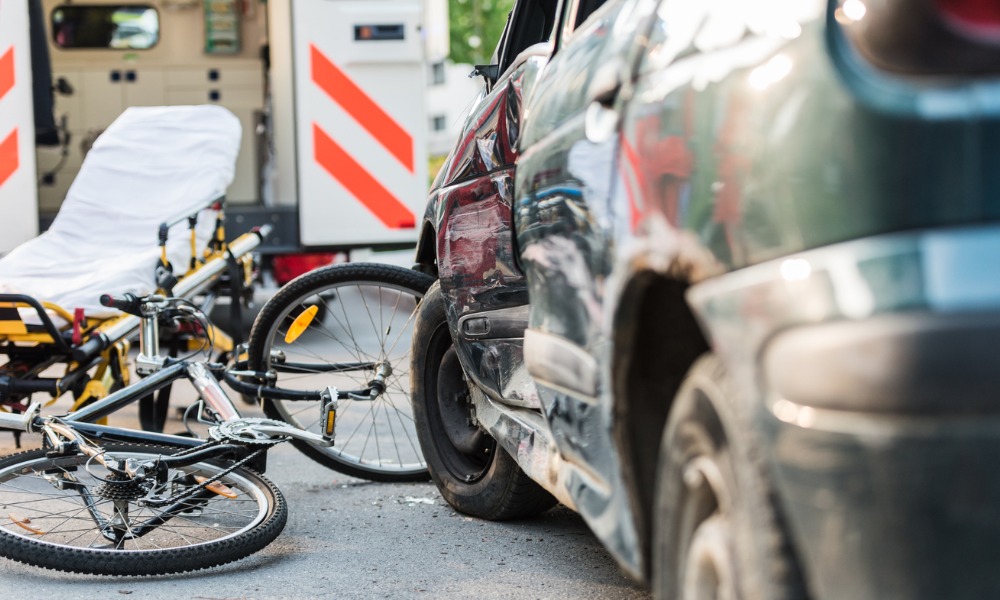
One of the drivers did not notice the cyclist who was clearly visible: court

In a recent ruling, the BC Supreme Court upheld drivers' liability in a motor vehicle collision that injured a cyclist.
The incident, which took place on South West Marine Drive in Vancouver, led to a trial focused solely on liability. The court found both defendants, Ruoyun Liang and an unidentified driver, negligent and responsible for the accident that injured cyclist Quinn Anderson.
The collision occurred when Anderson's bicycle struck the rear of a vehicle driven by Liang, who had stopped suddenly in response to a U-turn performed by an unidentified driver. Anderson claimed that the negligence of both motorists caused the accident, while the defendants argued that Anderson was solely responsible.
The court heard testimonies from Anderson, Liang, and Michael Yang, Liang's passenger. Anderson, a seasoned cyclist with extensive experience on the route where the accident occurred, described the events leading up to the collision in detail. He testified that he was cycling safely, using proper signals and maintaining a reasonable speed. Anderson stated that Liang's vehicle, initially in Lane 3, abruptly stopped across Lanes 2 and 3, giving him no time to avoid the collision.
Liang and Yang confirmed the presence of the unidentified driver, who performed an illegal U-turn over a median. However, their testimonies conflicted with each other and with Anderson's account regarding the exact positioning and actions of Liang's vehicle at the time of the collision. The court found Anderson's testimony to be credible and reliable, while Liang's was deemed inconsistent and uncertain.
The Supreme Court ruled that both the unidentified driver and Liang were negligent. The unidentified driver's illegal U-turn in congested traffic created a substantial risk to other road users. Liang's response—bringing her vehicle to an abrupt stop across two lanes—was deemed unreasonable and negligent. The court found that Liang failed to signal her intent to merge into Lane 2 and did not notice Anderson, who was clearly visible.
The court applied established principles of negligence, determining that both drivers breached the standard of care expected of reasonable and prudent motorists. The court emphasized that drivers must take reasonable care to avoid causing harm to others on the road. Liang's abrupt stop, without reasonable justification, created an unforeseeable hazard for Anderson, who was cycling prudently.
The court apportioned 60 percent of the fault to Liang and 40 percent to the unidentified driver. The decision highlighted Liang's greater departure from the standard of care, given her failure to signal, her lack of attention to Anderson, and her unreasonable stop.